Tags
Darjeeling, Darjeeling Tea, Darjeeling Toy Train, Darjeeling Zoo, Gorkhas, Himalayan Mountaineering Institute, Kanchenjunga, Mirik, North East India, Red Panda, Sikkim, Travel
Hi, A warm welcome to my blog 🙂
It’s been a long time since my last post but I’m back now 😉 Two months ago, in September, I was in North-East India on a thirteen-day adventure 😀 Today, I’m delighted to share with you all the first part of my seven-part travelogue on this amazing trip of mine 🙂
So get ready to begin your journey with me through the beautiful tea gardens of the world-famous tourist destination of Darjeeling (also known as “the Queen of the Hills”) in the eastern state of West Bengal; the sensational landscape of the northeastern state of Sikkim – the least populous state in India and the second smallest state after Goa; and Kalimpong, the lovely hillstation in West Bengal, famous for its floriculture.
Here’s a map highlighting in yellow the places I visited on my trip…
http://sikkimtourism.gov.in/Webforms/General/MapsOfSikkim/Maps.aspx
Highlights of my 13-day journey…
Tea gardens of Darjeeling, Kanchenjunga (the third highest mountain peak in the world), Gangtok – the capital city of Sikkim, Nathu La pass (at 14000 feet at the Indo-Tibetan border) through which goods are traded between India and China, Gurudongmar Lake (one of the high altitude lakes in the world at 17100 feet) and Yumthang Valley in North Sikkim, Flower nurseries of Kalimpong, incredibly amazing landscape and sights of Sikkim, lovely people, ancient Buddhist monasteries and of course Sikkimese and Tibetan food, among many other things.
My itinerary…
Mumbai – Darjeeling (2N/3D) – Pelling (2N/3D) – Gangtok (3N/4D) – North Sikkim [Lachen (1N/2D) & Lachung (2N/3D)] – Gangtok (1N/2D) – Kalimpong (1N/2D) – Mumbai
And now… it’s time to start off with the first leg of my journey from Mumbai to Darjeeling.
Darjeeling, as most of you all may know, is internationally renowned as a tourist destination for its spectacular view of Mount Kanchenjunga (or Kangchendzonga or Kangchenjunga), its tea industry and the Darjeeling Himalayan Railway, a UNESCO World Heritage site.
So without further ado, let’s go 🙂
Friday, 12 September 2014
7:40 AM. Chhatrapati Shivaji International Airport, Mumbai.
Sitting by the window in the third front row on the IndiGo flight to Bagdogra via Guwahati, I’m elated when the flight attendant makes the welcome announcement introducing the cabin crew. The pilot is from Mexico City!!! It’s been exactly fifteen months since my last meeting (on 11th June, 2013) with a very important Mexican – the Mexican Ambassador in India! I await the stopover in Guwahati with eager anticipation, my opportunity to meet the Mexican pilot.
I check the in-flight magazine for food menu. I haven’t had breakfast and I would probably reach my destination – Darjeeling after 7-8 hours. So I ask for a vegetarian submarine sandwich. Today is a feast day dedicated to Lord Ganesha and Mom has forgotten to remind me not to eat non-vegetarian meals. I know she won’t like me having non-vegetarian food so I’m going vegetarian for the day. I don’t relish cold sandwiches but the submarine tastes good. A nagging cough which has refused to subside for weeks pops up again. Vegetable soup is the only thing hot but I dislike ready-to-eat food so I ask for warm water instead. And then a small tin of honey and oatmeal biscuits. On my travels, I usually wake up at 4:30 or 5:00 AM and I need something to munch on soon after as breakfast is mostly served after 7:00 AM.
Flipping through the in-flight shopping catalogue, I come across a small LED torch keychain priced at 390 rupees. Thinking that it might come in handy on the trip, I buy it. After three and a half hours, the plane lands at Guwahati Airport. The pilot comes out of the cockpit to bid the passengers goodbye. Short and middle-aged, he oozes warmth and happiness. His cheerful “bye-byes” in English, Hindi and Spanish bring a smile to my face. I ask the flight attendant if I can have a word with the pilot and she says, of course! A “word”? I end up talking nineteen to the dozen for the next twenty minutes! He’s an amiable person with an infectious joie de vivre. Soon, it’s time to take off and I return to my seat. Cool, my trip has started off on a good note!
About forty–five minutes later, the flight lands at Bagdogra Airport near Siliguri, the third largest city of West Bengal. Uh-oh, it’s hot outside and I have worn a long-sleeved woollen top. As usual my bag is one of the last ones to arrive in the baggage belt. I book a non-AC pre-paid taxi for Darjeeling at 1735 rupees. The air-conditioned one comes at an extra cost of 300 rupees. I prefer fresh air. Besides, the weather would get better on the way to Darjeeling and then I wouldn’t need the AC.
The taxi driver collects my bag and leads me towards a parked WagonR. I climb in and…Yikes, it’s so hot! I immediately roll the windows down to let out the oven hot air. A few minutes later, I feel better. I check the time. 12:45 PM.
It’s a three and a half hour journey to Darjeeling, about 94 kms away. The driver asks me if I would like to go via Mirik. Having read about this small hill town and its lovely tea gardens, I’m interested. It’s not very far, about 52 kms from Siliguri city and 49 kms from Darjeeling. The driver says it will cost me 800 rupees extra. I negotiate the price. He finally relents and agrees to my price of 600 rupees.
Mirik has plenty of orange orchards. It is the major supplier of oranges in West Bengal. Right now the oranges are green…
Most of the tea gardens producing the famous Darjeeling tea are located in and around Mirik.
A bird’s-eye view…
I relax, basking in the panoramic views of the beautiful countryside and flourishing green tea estates.
View from a popular vantage point – the Sourene (or Tingling) View Point, named after a nearby tea estate…
The view from here is awesome. After about eight kms, I reach Mirik town located at an altitude of 4,905 feet.
The main attraction here is the Sumendu lake…
I get off to visit the lake. Near the car park, there is a small pond where fish breeding is carried on. Fishing is strictly prohibited and is a punishable offence. Small trout-like fish gather in hordes when visitors throw them fish food available at nearby stalls. Wow, what a sight! I have never seen so many hungry fish in my life before!
A pedestrian road leads to the Mirik market which has small shops selling all kinds of items including woollens, garments, souvenirs, etc. From there, the Mirik Monastery is a short distance away, on a hill top.
I proceed towards the lake. The entrance is lined by food stalls. I enter the park beyond which lies the lake. It’s off-season time so there are no tourists, only locals. The lake has boating facilities. I prefer to walk around the park. There are plenty of school children around. The girls here are quite modern. One of them has blue highlights on her hair.
A guy asks me “Madam, horse riding?” No thanks, pony riding around the lake is not my kind of thing.
The other side of the lake is covered with flourishing Dhuppi (Cryptomeria japonica or Japanese cedar) forests.
The park and the pine forest are linked together by an arching 80-ft (24-m) long footbridge called Indreni Pool (Rainbow Bridge)…
I proceed towards the edge of the lake. My nagging cough makes me cut short the walk. I don’t want to exert myself too much right on the first day of my trip. I return to the car.
Earlier, the driver had told me about a Nepali market where imported goods, clothes, shoes, etc. are sold at a very cheap price. Now when I ask him about it, he tells me there’s not much to see there. Okay. (Later I learn that the Nepali market or Pashupati Market is at the India-Nepal border. About 12 km from Mirik, it is the gateway to the Kingdom of Nepal and a must-see for tourists. The road that leads to the market goes all the way to Kathmandu. Only Indians and Nepalese are allowed to cross over the border area.)
Krishnanagar, a short distance away from the lake, has a number of hotels and restaurants for tourists.
It’s 3:00 PM and I need to reach Darjeeling and find a good place to stay before it gets dark. So we resume the journey to Darjeeling.
It’s a beautiful hill-side drive through the vast expanse of lush green tea estates.
Yours truly at one of the tea gardens, Gopaldhara Tea Estate…
The road passes by a number of flower nurseries and gardens. Mirik has one of the best climate for a typical orchid called Cymbidium orchids, which fetches one of the highest prices in the world flower markets. Almost all homes have a garden with a wide variety of lovely flower plants. I stop at a place to have tea. I like the Oolong tea so I buy a small pack of it.
Ecotourism and homestay facilities have made this small town an attractive destination for tourists looking for a quiet and peaceful holiday.
It’s a lovely scenic drive from Mirik to Darjeeling. We reach Simana, the Indo-Nepal border area where the road acts as a divider between both countries. I’m naturally curious as I haven’t seen an open border between two countries before. The Indian side looks similar to the other side because the villagers are mostly from the Nepali community. I pull out my camera but the driver tells me that taking photographs of the border is forbidden and the security forces may object. Okay, whatever…
We stop at Simana View Point – a 60 feet by 40 feet plateau and a viewing area – from where one gets a picturesque view of the beautiful Nepalese mountainous landscape including the Kanchenjunga. The viewing area falls in Nepal but one can freely cross over to get the views. I’m unable to see anything in the heavy fog. It’s a shame, so much beauty around… and the fog plays spoilsport! Just nearby, there are stalls selling food and refreshments. The cold air triggers my coughing bout and I have to return to the car.
The driver tells me that many tourists make a day trip from Darjeeling to Mirik which costs around 2500 rupees for a small car like the one I’m travelling in. So, my detour at 600 rupees has been a nice deal!
At 4:25 PM, we pass this beautiful forested place…
Watch my video : On my way from Mirik to Darjeeling
At 5:00 PM, we reach Ghoom, a small town 6 km away from Darjeeling. The Darjeeling Himalayan Railway, an amazing century-old two feet narrow gauge railway runs through this town.
This world-famous steam locomotive, the first of its kind, was introduced in 1881 under the British colonial rule to reduce the enormous travel time taken by bullock carts and horse carriages from Siliguri to Darjeeling.
Fondly called the “Toy Train”, it was declared as World Heritage by UNESCO in 1999, the second railway in the world to receive such status. Amazing zigzags and loops on the way help this engineering marvel to overcome steep gradients and curves of the mountains making it a unique ride.
It takes about 7 hours to complete the journey passing through picturesque mountain landscapes and villages. In 2010, due to landslides, a section of the track on this route was damaged and since then there is no toy train from Siliguri to Darjeeling. But there are toy trains operating between another town, Kurseong and Darjeeling.
At 7407 feet, Ghoom is the highest altitude station on the Darjeeling Himalayan Railway (DHR) track. The Darjeeling Himalayan Railway Museum is located in the station premises.
Toy train services are available daily from Darjeeling Railway Station to Ghoom and back. At a place called Batasia Loop, the train makes a 360 degree turn (to lower the gradient of its ascent) around a beautiful garden housing a War Memorial.
Riding the Toy Train has been a joyous experience to tourists for more than a century. During peak season, tickets have to be booked well in advance for this heritage ride that once provided the first mountain transportation link in the country.
At places, the railway track runs alongside the main road (The National Highway 55 or the Hill Cart Road), intersecting it many times. Talking about the train, it chugs by just in time for me to take a photo and a two-second video clip…
Watch my video : Darjeeling Toy Train
The small steam engine pulling three tiny coaches, with about 15 seats each, is a cute sight! But the black exhaust fumes that it exhales leave me coughing incessantly. That’s it! I’m not going to take the Toy Train joy ride! At least I was lucky enough to get a quick look at this “pride and joy of Darjeeling”.
I reach Darjeeling at around 5:15 PM. At first sight, I can see that it’s not a sleepy hill town but more like a busy city with narrow and crowded streets, congested areas, and… pretty-looking fashionable young women with bright makeup, everywhere!
At 6,710 feet, Darjeeling is blessed with great weather. During the temperate season of spring, summer and autumn, hordes of tourists flock to this town for its main attraction…a 180 degree panoramic view of the sunrise over four out of five highest peaks of the world from Tiger Hill, which is 13 km from the town. Many love visiting this popular town in the winter and some, in the monsoon. And then, there are a few like me, who just want to breathe clean mountain air and admire the hills when there are no tourists and the hill town is at its serene best.
I consult my list of hotels, prepared after going through online travel sites. I have already planned to stay at some nice place near The Mall (or the Chowrasta Mall), which is the town centre. It’s the most preferred area for tourists. A majority of popular hotels, restaurants and shops are located along the entire stretch of Nehru Road leading up to the Mall and the Mall road itself.
I get off at the taxi stand from where the Nehru Road leading to the Mall begins. Just opposite the stand is Hotel Dekeling, which features in my list. It’s located in an old building and the entrance is through a narrow staircase. But I have opted for another place further ahead. I drag my poor little trolley bag through the bustling pedestrian Nehru Road. Due to rain, the narrow road is wet (and puddled at places!) and the uneven surface makes it difficult for me to walk through the crowd while checking on my bag from time to time. To make it worse, there is a slight drizzle. The road is lined by all kinds of shops (arts, crafts and jewellery, curios, woollen clothes, jackets, shoes, etc.) and restaurants (Indian, Chinese, Continental, etc.).
I find the hotel I’m looking for…Main Olde Bellevue Hotel! It’s bang opposite to Glenary’s, one of the best bakery and restaurants in town. I climb up the broad marble stairs to the first floor. It houses a KFC outlet. So I carry my bag to the second floor and find the reception. A few minutes later I’m checking out a large room overlooking the busy Nehru Road. The room boy tells me it’s a double deluxe room of 2000 rupees but I can have it for 1000 rupees. But, of course, it’s off-season now! The room and bathroom looks good. And there’s a TV. I tell the room boy to get me fresh bedsheet and towels. He soon returns with new ones. One look at the towel and I know that I’m not going to use it. It’s good that I carry one of my own. I send the boy out for new bedsheet each time he returns with one. Then, I find a hair on the pillow cover. Ugh! After four or five rejections, the exercise comes to an end. I can sense the room boy silently sighing in relief. He tells me that they don’t have an in-house restaurant but he can get me food from outside. It’s not necessary because I’m going to search for a better hotel while looking around the town. No doubt this hotel is very well-located but maybe I have mistaken this hotel for another.
My cellphone lost connectivity after passing Simana so now I’m unable to call home and inform my folks that I have reached Darjeeling. To my surprise, there’s not a single shop around providing STD phone service. The red phone booth inside Glenary’s turns out to be a showpiece! I’m tired and hungry and I need to eat because I haven’t had anything since morning. I start for a restaurant known for its Tibetan fare. Kunga restaurant turns out to be a tiny place located in the same building as Hotel Dekeling. It’s been almost nine months since the last time I have had Tibetan momos (dumplings with spicy meat or vegetable fillings that are served either steamed or pan-fried, with a spicy hot sauce). I order chicken momos and sweet corn chicken soup. When the food arrives, I’m all ready for it! I taste one of the dozen momos and I’m totally disappointed. But, hungry as I am, I have 5-6 of them. After a spoonful of the soup, I cringe. The soup is salty! Shucks, I should have dined vegetarian at Glenary’s!
A few minutes later, I’m on my way up the long flight of narrow stairs to Hotel Dekeling. The reception is on the fourth floor. It’s a charming place owned by a Tibetan family. The room tariff for a standard room is 1600 rupees plus taxes. The room is small but the bed linen and towels look spotlessly clean. The youngster managing the place agrees to give me a discounted tariff of 1200 rupees including taxes. I make an advance payment of 500 rupees for the next day’s stay. The hotel has plenty of guests, mostly foreigners. On my way downstairs, I see a small group of French tourists huffing up the stairs to the hotel.
I return to Nehru Road. It’s nearing 7:00 PM so one by one all the shops have started pulling the shutters down. I reach the Mall, a wide promenade atop a ridge lined with shops and restaurants. A pedestrian-only zone, free of vehicular traffic, it’s a place where one can sit and chat, bask in the sunshine, watch the sunrise or sunset over the mountains, or just spend some blissful moments in silence.
Looking around, I see the Oxford Book Store, a more than 60-year-old landmark, built in a typical hill-style architecture with pitched roof. I quickly run my eyes over the books on display before moving on to check the 2-3 varieties of Darjeeling tea that they sell. I buy a small pack of black tea and green tea. Just next door are two tea lounge cum retail outlets of packaged teas – Nathmull’s Tea and Golden Tips Tea Lounge. I enter the nearest one, Golden Tips Tea Lounge. They have all sorts of teas and tea accessories as well as gift and souvenir items. I take a good look at all the stuff. It being a late hour by Darjeeling standards, there are just 3-4 people in the lounge. The menu card lists different types of teas along with vegetarian snacks. I choose Oolong tea which soon comes to my table steaming hot in a large, green cup. I still haven’t got over the lousy dinner which has worsened my cough. After two sips of the tea, I’m coughing again. I pay the bill and leave the place. The next door Nathmull’s Tea Lounge is a similar place but it has more variety of tea and goods. Both outlets belong to the same reputed tea merchant family which is strictly vegetarian. So that explains the reason for serving only vegetarian snacks! The manager is busy explaining the fine details of different teas to his customers.
It’s a well-known fact that the world’s best tea comes from Darjeeling. It’s the ultimate with its own unique natural aroma and flavour. Commercial tea cultivation in Darjeeling began in 1856. Extensive tea plantations were established in the region, and tea growers developed hybrids of black tea and created new fermentation techniques. The resultant distinctive Darjeeling tea is internationally recognised as the most popular of the black teas. Like Champagne and Tequila, Darjeeling Tea can only be produced in the hills of Darjeeling and cannot be replicated anywhere else in the world.
Besides numerous lush green tea gardens, the “magnificent sunrise” from Tiger Hill and the Toy Train ride, the other attractions of this popular hill station are the Himalayan Mountaineering Institute (HMI), Himalayan Zoo, Ghoom Monastery, Tenzing Rock Garden, Japanese Temple, Tibetan Handicraft Centre, Ropeway (India’s oldest passenger cable car) and the Botanical Garden.
On the way to Darjeeling, the taxi driver had told me that most tourists take a private or a shared vehicle for sightseeing tours because some places are very far to be walked out, above all, Tiger Hill. To watch the sunrise from Tiger Hill, which is at an altitude of 8,482 feet, one has to wake up at 3:00 AM and drive 13 kms on a rugged, narrow, uphill road.
At sunrise, on a clear day, the golden rays of sun brush the Kangchenjunga (at 28,169 feet, it is the third highest mountain peak in the world) and fill the entire eastern Himalayan Mountain range with its golden ambience. Even Mount Everest (the world’s highest peak at 29,029 feet) is visible from here as a small triangle speck.
I’m not going to do the “tourist” thing. Considering the foggy weather, I don’t think that the sky will be clear to see the sunrise the next morning. The last thing I want to do is spend 2000 rupees to travel in the wee hours of the morning, on an uphill road, probably packed with tourist cars, just to see nothing but dense fog. Neither have I made any plans to visit any of the town’s attractions. All I want to do is walk around the nearby places and bask in the fresh, clean air.
My first day in Darjeeling hasn’t worked out so well. Thanks to the bad dinner, I have lost my appetite for non-vegetarian food. My hotel is not what I had expected it to be. I now realize my mistake. It’s the Annex of Main Olde Bellevue Hotel which means it’s the cheaper or budget wing of the hotel. The one I was looking for is right here on the Mall. And now, I find out I got nothing to see or do except maybe sit on a bench like a few others. The place becomes empty by 8:00 PM! When I had asked the taxi driver if it was fine to stay out till 10:30 – 11:00 PM, he had given me a horrified look.
I return to my hotel. It’s only 7:30 PM! I haven’t yet called up home. I ask the hotel manager if he knows where I can find an STD phone, he tells me it will be at the Telephone Exchange. He tells a hotel attendant to take me there. It’s somewhere near Mahatma Gandhi Road. I follow him along the dim-lit road. We reach the Telephone Exchange but just as I expected, there’s nobody around. The guy climbs up the rest of the floors to look for the security guard. When he returns, there are two guys with him. One is the security guard and another, an employee who looks like a North Indian, from Uttar Pradesh. The latter, when he finds out that I want to call home in Mumbai, immediately offers his cellphone to me. So sweet! It costs less than ten rupees to make the call but I didn’t feel like asking strangers to lend me their cellphone to make a one-minute call to Mumbai. Within a minute, my call is over and I offer to pay for it but he refuses. The call probably cost him five rupees but the value of his kindness was immeasurable. God Bless! The hotel attendant is flustered. “If I had known you wanted to make a call to Mumbai, I would have given you my cellphone.” While returning, he repeats the same thing to me more than 5-6 times. Yeah, whatever! I most definitely had told that to you and to the hotel manager. Well, it wasn’t their fault. Quick thinking just doesn’t come easily to some people!
Back in my room, I watch TV till 10:00 PM, cough some more and then go off to sleep.
Saturday, 13 September 2014
At around 3:30 AM I wake up to the sound of loud voices in the corridor. The other hotel guests are leaving for Tiger Hill. Peace returns after twenty minutes.
The alarm goes off at 6:00 AM. I pull aside the curtains and open the windows. The distant hills are no longer visible in the thick fog. I wonder if the others have been able to see the sunrise. Seeing the weather, I’m sure they weren’t lucky. I turn on the TV and let an English song shatter the silence in the room. By 7:30 AM, there is a steady increase in footfalls on the road below. I can see a few people, probably the staff, entering Glenary’s.
At around 9:30 AM, I step out for breakfast at this more than 100-year-old place running since colonial times. Glenary’s is an iconic landmark in the town, extremely popular for its cakes and bakes. The bakery and café is on the ground floor. The restaurant is on the first floor, and its pub, one of the most popular in town, is in the basement.
I have no appetite for the many kinds of pastries and savouries. The café is buzzing with customers, most of them foreigners. I take the table next to a long row of windows offering a view of the mountains far beyond. My breakfast is toast with butter, hot milk, and fried eggs, sunny-side up. I see plenty of people dropping in for the goodies at the bakery. Perhaps, I’ll pick up something later in the day.
Out on the road, I see more foreign tourists. Darjeeling is the only tourist destination in eastern India that sees a large number of foreign travellers. It had become a well-known hill station and a health resort as early as 1860 when many Englishmen and their families, mostly from Kolkata (previously called Calcutta) would spend their holidays here to escape the summer heat of the plains. When Mark Twain visited Darjeeling in 1896, he was very fascinated by this place. I can imagine this lovely land looking incredibly beautiful in those days.
Darjeeling was the formal summer capital of the colonial Bengal Presidency, which comprised of the present state of West Bengal. When India gained independence in 1947, Darjeeling was merged with this state. But with a majority of Nepali (or Gorkha) population, there were several agitations from the 1950s through the 1980s in demand of a separate state, Gorkhaland. In 1988, the Gorkha Hill Council, an autonomous elected body, was established to govern the Darjeeling district, comprising of the hill towns of Darjeeling, Kurseong, Kalimpong and some parts of the nearby region. Despite poor infrastructure, this old scenic hill town retains a colonial charm which is reflected in its heritage buildings and conservative culture. No wonder it’s been a popular filming destination for Bollywood movies.
Today the town residents, besides the predominantly Gorkha population, include Tibetans, Lepchas and Bhutias from the neighbouring state of Sikkim, Bengalis from the plains and Marwaris from Rajasthan.
I walk to the Mall. It’s cold and foggy. The Mall Road encircles the Observatory Hill, one of the town’s most popular spots, from where one can get a panoramic view of the mountains. At the summit, there is an old temple. Also on the hill, is an old heritage hotel, Windamere. During the colonial days, this five-star hotel used to be the tea planters’ boarding house.
It’s around 10:00 AM. The way to the hill top is from the right-side Mall road.I feel like going on a long walk but not on a 15-minute uphill climb which could spark off another bout of coughing. Besides, it’s too foggy to see anything from the top. So I take the road to the left that leads to the zoo. I don’t fancy watching birds and animals in cages but the Himalayan Mountaineering Institute (HMI) is housed in the zoo premises.
On the way, I see a building with striking architecture… Gorkha Rangamancha Bhawan, a cultural centre and venue for orchestra performance. The town has several British-style public schools constructed by Scottish missionaries for the British residents in the 1800s. They still stand today, attracting students from within the country and neighbouring countries.
A couple of luxury hotels and resorts are located along the road. Further ahead, I see a narrow road going uphill.
I wonder what beautiful place lies at the end of the road. A few metres later my curiosity is satisfied. The road leads to the Shrubbery Park (or Nightingale Park ) which was once the courtyard of a British bungalow constructed in 1879, but destroyed in an earthquake in 1934. The road also leads to a sprawling government bungalow.
The park is an idyllic and peaceful place. Except for a few sweepers, I don’t see anyone around. During the tourist season, this beautiful park hosts cultural events daily. There is a huge statue of Lord Shiva along with a small temple in the premises.
The mountain view is rendered invisible by the dense fog so I follow a small path leading down to picturesque greenery.
Watch my videos: The Shrubbery Park (or Nightingale Park ) at 10:55 AM & The Shrubbery Park (or Nightingale Park ) at 10:59 AM
It’s 11:25 AM. I’m back on the road leading to the zoo. Even though it’s cold and foggy, I’m enjoying my walk. I feel totally refreshed… I can walk on for hours!
Watch my video: Walking towards HMI
Ten minutes later, I reach the entrance of the Padmaja Naidu Himalayan Zoological Park and the Himalayan Mountaineering Institute.
A few metres away from the entrance, a Himalayan black bear is lolling away in his open space. A climb uphill, and there is an enclosure below housing Tibetan wolves. A few more enclosures line the way to the HMI, the oldest mountaineering institute in the country.
This pioneering institute was established in 1954 by the local hero Tenzing Norgay Sherpa, who, with Sir Edmund Hillary, was the first to successfully climb the Mount Everest in 1953.
They have a small museum with a very good collection of mountaineering equipments, some used in various mountaineering expeditions. Details of earlier attempts to conquer Mount Everest, climbing clothes and gear used in those days, and the ones used on the first successful ascent, as well as other interesting equipment are displayed here. The Zeiss Telescope gifted to the Maharaja of Nepal by Hitler is also exhibited here.
Outside the building, there is a memorial dedicated to Tenzing Norgay Sherpa…
He was cremated here on his death in 1986… 
I return taking the path alongside caged wild cats which include Siberian Tiger, Royal Bengal Tiger…and Black Panther.
Just beside the black cat’s enclosure, is the animal I’m eager to see…the Snow Leopard!
Watch this video: Snow Leopard at Darjeeling Zoo
Boy am I glad to be visiting this lovely zoo! What I didn’t know before was that at 7,000 feet, it is the largest high altitude zoo in India. Opened in 1958, the sprawling zoo has many exotic, alpine birds and animals. It is internationally recognized for its conservation breeding programmes of the highly endangered animal species of the Eastern Himalaya – Tibetan wolf, Snow Leopard, and the one I’m most excited to see…Red Panda!
This one is lazing in a small enclosure. I guess it’s bored.
Watch my video: Red Panda at Darjeeling Zoo
There’s one more Red Panda around but this one is high up on a tree, enjoying a large open space. Due to fog, I’m unable to see it till a passing visitor points it out to me. I zoom the camera…
A pair of Himalayan monkeys huddling together for warmth… 
(Later in North Sikkim, I get to see Himalayan monkeys jumping from tree to tree in their natural habitat!)
I’m thoroughly enjoying my zoo visit. Time passes so quickly! It’s 12:30 PM and at this time, I’m supposed to be checking out of my hotel. I walk at a hurried pace, two kilometres back to the Mall. This time, I take the Mall Road which comes out to the right-side of the Mall. It passes by the Raj Bhavan (the summer residence of the Governor of West Bengal), a beautiful mansion with lush gardens and British bungalows, which once belonged to the Maharajah of Coochbehar. I see some really nice hotels around. Walking on, I reach a lovely view point with benches around. Instead of mountains and valleys, this is what I get to see…dense fog!
Nearing the Mall, the path going up the hill is abuzz with locals and tourists. One side of the road is lined by stalls selling woollen wear, jewellery and plenty of Made-In-China goods.
It’s 12:55 PM. At this hour, the Mall has plenty of visitors. Being Saturday, it is a holiday for most people.
Watch my video: The Mall or Chowrasta in Darjeeling
The Oxford Book Store…  Returning to the Nehru Road to the right…
Returning to the Nehru Road to the right… 
It almost 1:00 PM. I drop in at Glenary’s. They have a wide variety of sweet goodies and savouries. Croissants, muffins, chicken rolls, meat pies, apple pies …you ask and it’s all there! I look for something light that would energize me a bit. Finally, I pick up a chocolate scone and a chocolate & cream scone.
I return to my hotel, settle the bill and collect my bag to proceed to Hotel Dekeling. It’s a short way there but my bag is a bit heavy. I don’t know how I’m going to carry it up the more than 50 steps to the hotel. The chocolate treat that I have had, better be of use! Fortunately, one of the hotel boys is on the first floor. He immediately comes down to carry my bag.
The double bed occupies most of the space in the room. It’s a cramped up place compared to my earlier room. Worse, the TV has no English music channels and whatever it has is slightly blurred. The upper floor has deluxe rooms and suites. There is a common sitting area with a small library and a large dining room. I sit here for a while, sipping on black tea. The view is quite nice…
After half an hour, it gets foggy…
At 4:30 PM, I start for the Japanese Peace Pagoda, perched on a hilltop. The way to it is further down the Mahatma Gandhi Road. The narrow road is lined with all sorts of budget hotels, small shops and restaurants. A congested area!
Further on, it’s an enjoyable walk on the uphill road to the temple. About half an hour later, the road passes by a forested area. Soon, I hear drum beats and chanting of prayers. A few minutes later, I see the entrance gate and beyond it, the Japanese Temple…
Some metres away, is the dazzling, white hillside Peace Pagoda, one of the many built by Nipponzan Myohoji (a Japanese Buddhist order) as a symbol of peace and tranquillity. It is the tallest free standing structure in Darjeeling.
Visitors have to remove their shoes before climbing up the stairs in the Pagoda. The ground is wet so I watch the artwork from below. Due to fog, I’m unable to see the distant mountains but I do get to see this lovely view of the Japanese Temple, a few metres away…
I return to the temple. Here too, footwear is not allowed. Thankfully, the ground is dry so I can walk around barefoot. I climb up the wooden stairs to the prayer room from where the reverberating sound of the drum beats is originating. The evening prayers are from 4:30 PM to 6:30 PM. I enter the room just when the last visitors in the room are on their way out. Two priests are seated on each side of the large prayer room, beating a huge drum and chanting a sacred verse. I see small drum pads and sticks on the visitors’ mattress on the ground. The nearest priest greets me with a nod and motions me to pick up a drum pad and stick and play it to the rhythmic drumbeat.
Five minutes later, a man walks in with his one or two-year old daughter in his arms. He places her next to me and sits down. The little girl picks up her drumming pad and offers it to me. I put it back in its place but she picks it up and offers it to me again. I place it on my lap. Not content with one, she picks up another and offers it to me. Her father is unable to calm her restlessness as she noisily moves about, picking each pad and offering it to new entrants. The priest playfully bares his teeth at her. Her father carries her back to her seat and she erupts in a loud, shrill cry shattering the solemn atmosphere. Uh-oh! He hurriedly leaves with the screaming child in his arms.
A few minutes later, I rise to leave. The priest offers me small, white sugar balls which represent the deity’s blessings. On my way back, the fog clears a bit so I stop at a few places to take in some lovely views of the town.
Darjeeling town is a small place. By foot, one can easily cover all its tourist spots (except Tiger Hill) within 2 or 3 days whereas by car, it just takes a day. If I hadn’t been unwell, I would have walked to the Rock Garden and the Ropeway which is a little further away from the zoo. But I have to be careful of my health to visit the amazing high-altitude region of North Sikkim.
By the time I reach my hotel, it is dark. I decide to have dinner at the Lunar restaurant which is on the first floor of the hotel building. The previous night, the hotel attendant accompanying me to the Telephone Exchange had told me it was a very nice place serving vegetarian food only.
it’s too early to have dinner at 6:45 PM, but there’s nothing else to do. Lunar restaurant is a nice, spacious restaurant with good ambience and views. An excellent place for vegetarians! And, they also have a hotel on the upper floor. I check the menu. They have a variety of North Indian, South Indian and Chinese dishes. I choose their special vegetable soup and vegetable Hakka noodles. To be on a safer side, I ask the attendant if the soup is spicy. He says, “Yes, very spicy.” Sheeeesh! Good I asked! I tell him to go easy on the spice.
The soup arrives in a large bowl, more than enough for two people. Seeing its dark-reddish appearance, I take a small mouthful…and I feel a burning sensation inside me! It’s a shame but I can neither take in very hot, spicy food and drinks… nor very cold water. Strangely, ice cream doesn’t hurt me at all. Although a bit spicy, the soup tasted good so I let it go cold and then scoop out all the veggies. The noodles are good too but the serving is so large I can tuck in only a quarter of it. I feel really sorry about wasting good food but I can barely eat it. I’m missing home food. I pay the bill and leave.
Back in my room, my cough gets worse. I decide to skip tomorrow’s plan of going to the Observatory Hill at 5:00 AM to watch the sunrise. It’s drizzling so I’m sure the sky won’t be clear tomorrow morning. Instead of walking in the fog, I might as well catch some extra sleep. Besides, I have to leave before noon for my next destination, Pelling.
When it’s 9:00 PM, I switch on the TV to watch the Masterchef Australia show on Star World. By 10:00 PM, I’m off to sleep…
Coming next : My Adventures in Darjeeling, Sikkim & Kalimpong – Part 2 of 7



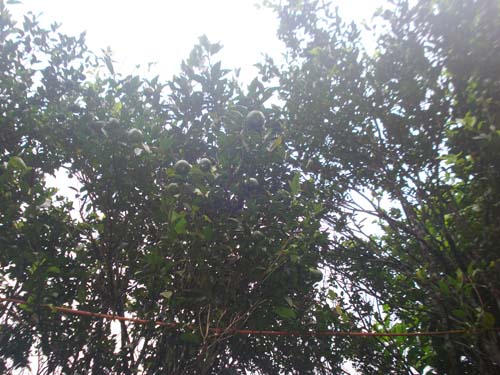
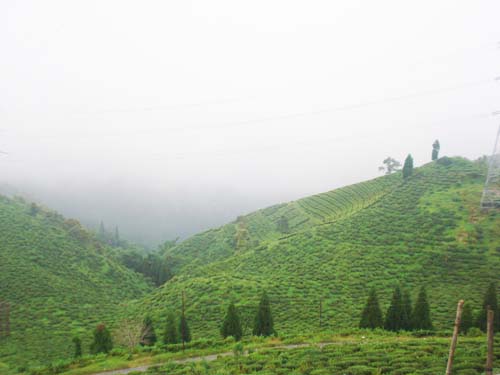
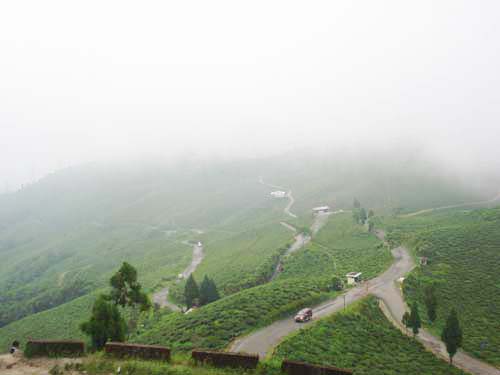
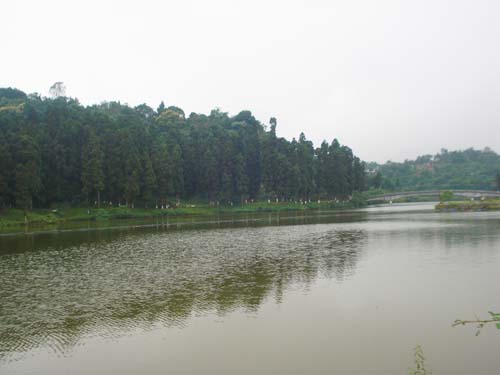
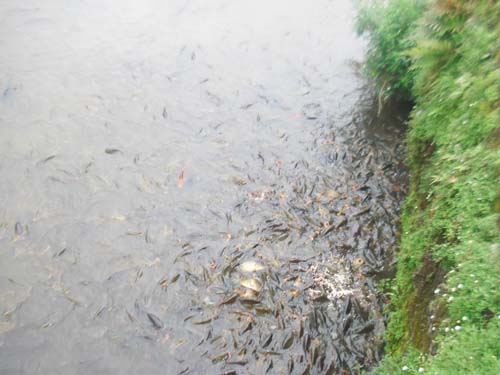
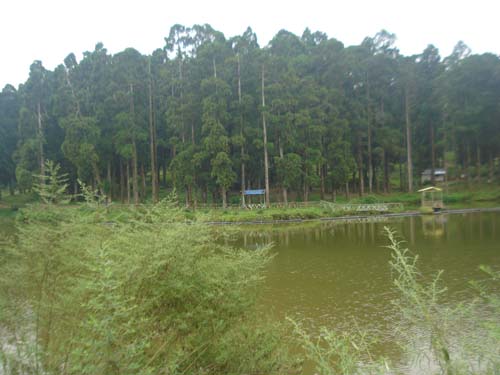
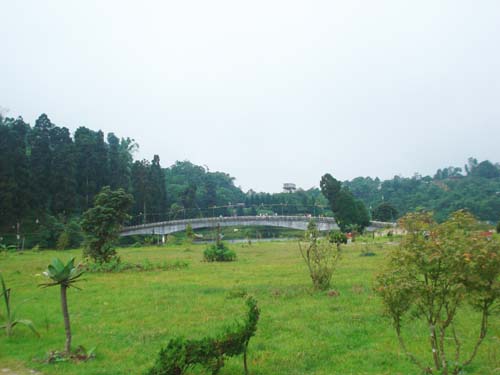
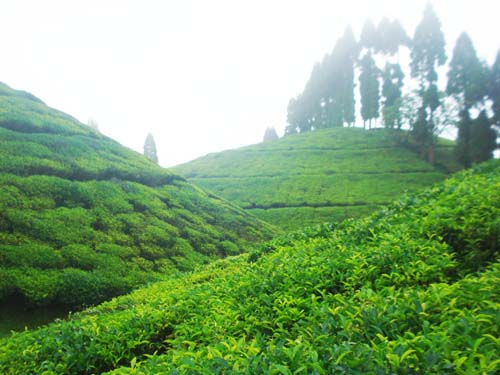

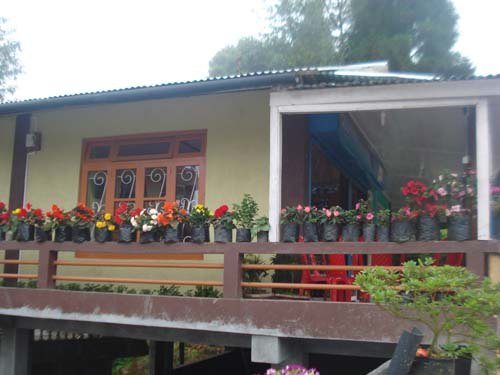
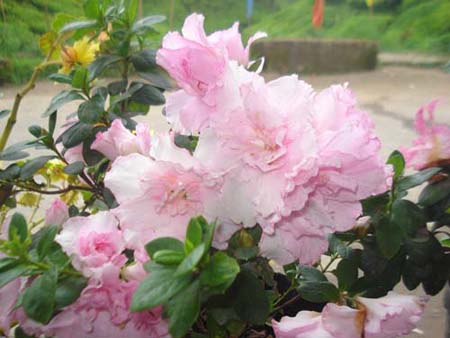





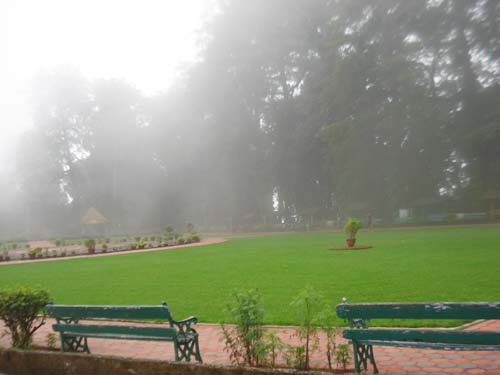
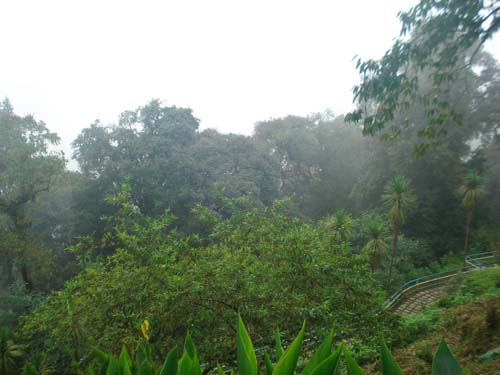
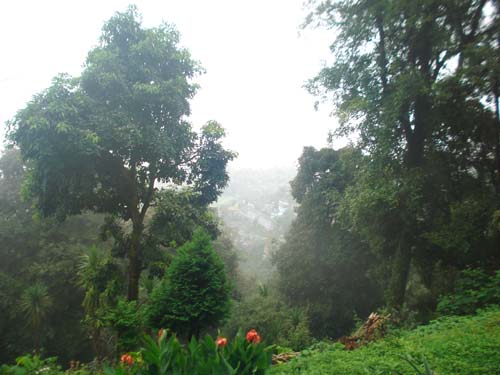
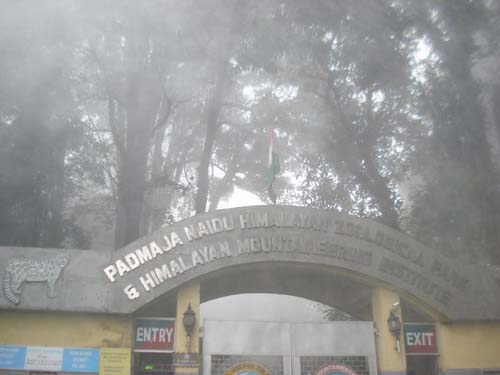
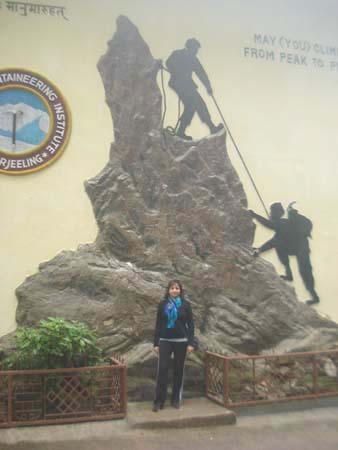

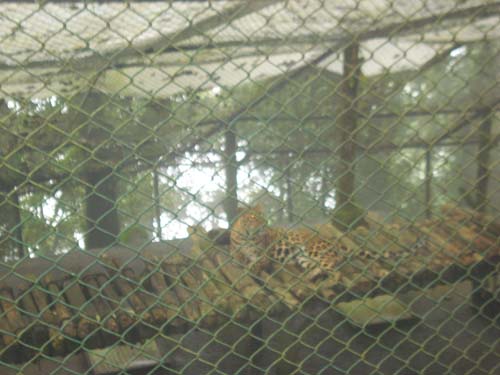
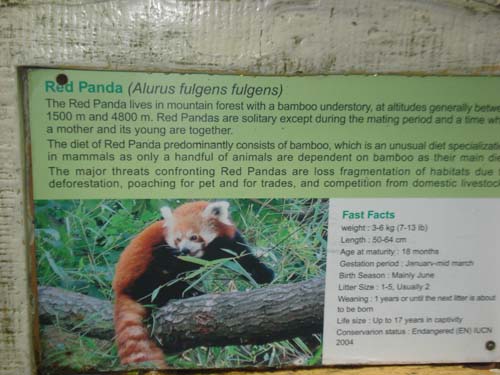
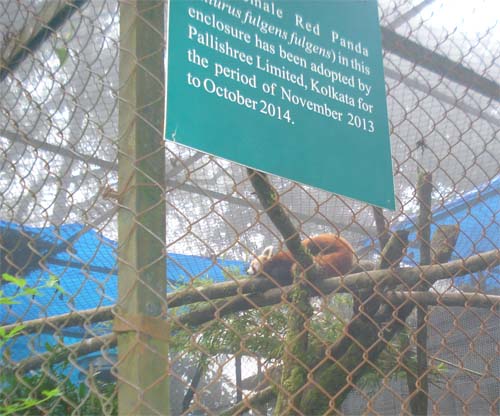
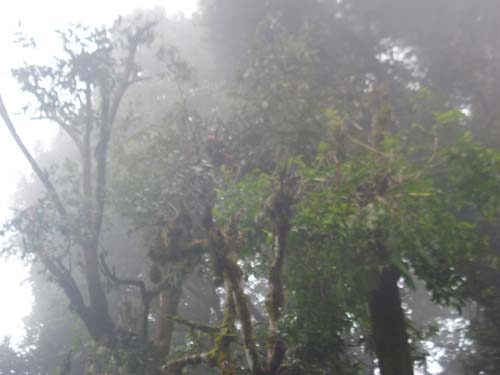
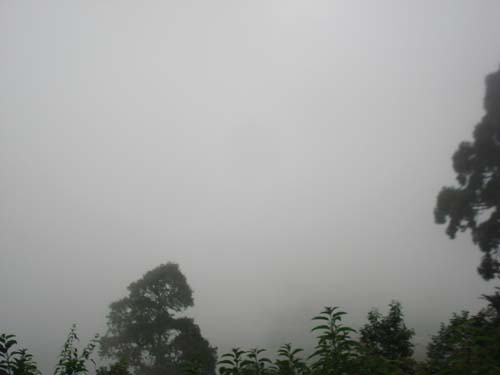
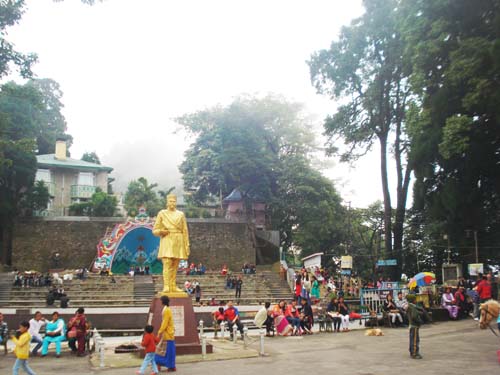
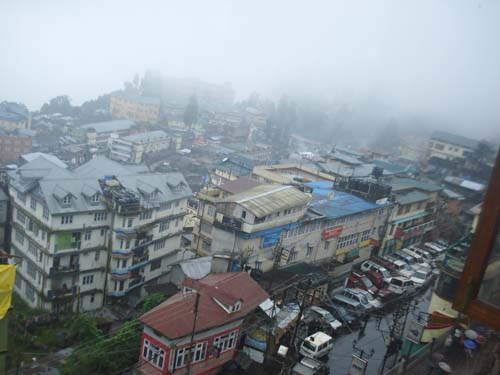
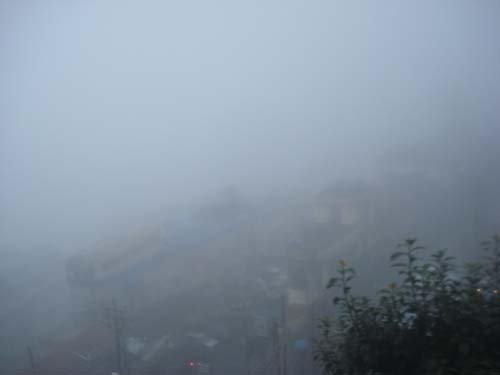
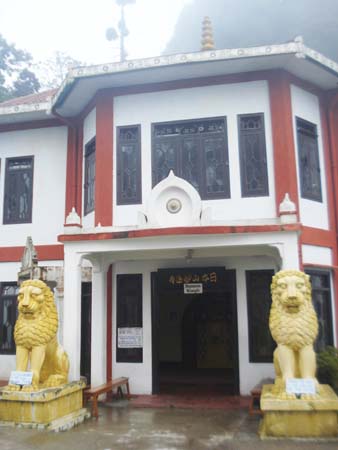
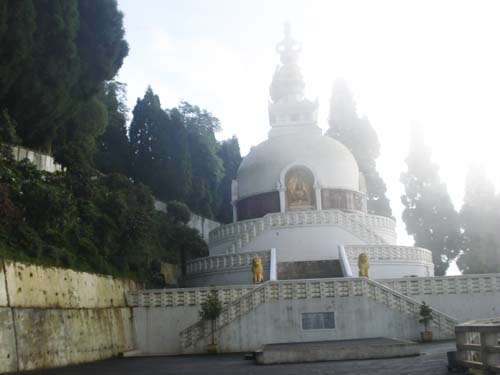
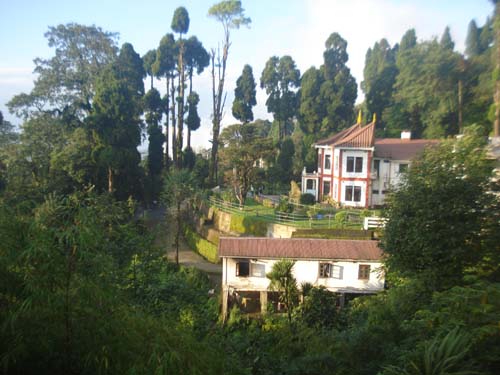
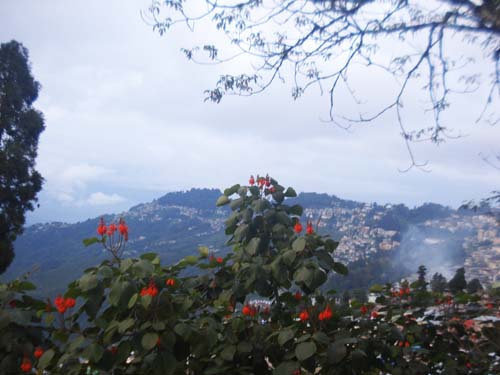
Thanks for sharing your journey about the North-East India tour. North India is generally cold and the silent beauty of the Himalaya. Last year I had visited some places in north India with the help of happyholidaystour.com. After visiting your post I got lots of information and also some new places on which I have no idea before. Hope this information will help me in our next trip. Keep it up.
LikeLiked by 1 person
Hi Gioia 🙂 Thanks so much! I’m glad to know that my blog has helped you discover more about Northeast India 🙂 Happy travels and do keep visiting me! Cheers 🙂
LikeLike